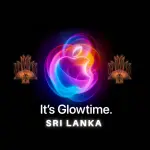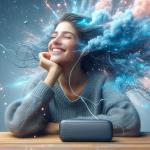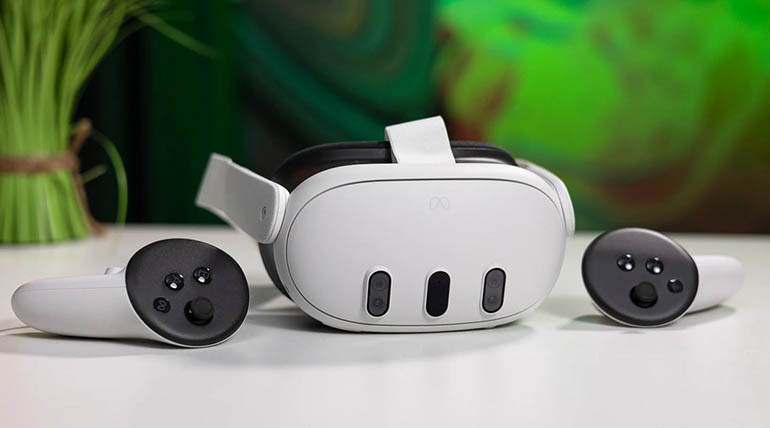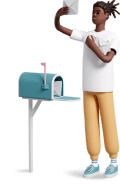The Next Frontier of Mixed Reality: How Advanced VR Technologies Are Reshaping Our World
In recent years, the fields of Virtual Reality (VR), Augmented Reality (AR), and Mixed Reality (MR) have seen tremendous growth. What was once the stuff of science fiction has become a reality, and we're now standing on the brink of a new technological frontier. These immersive technologies are reshaping entertainment, education, healthcare, and even the way we work. This post will explore how the latest advancements are transforming our world, with a particular focus on how cutting-edge devices like Apple Vision Pro, among others, are leading the charge in this exciting revolution.
The Evolution of Virtual Reality (VR), Augmented Reality (AR), and Mixed Reality
The Origins of VR and AR Technologies
The journey of VR and AR began decades ago, but it wasn’t until recent years that these technologies matured enough to impact everyday life. Virtual Reality, first envisioned in the 1960s, aimed to immerse users in completely virtual worlds. Early VR systems were bulky and expensive, reserved for research labs and military simulations. On the other hand, Augmented Reality, which overlays digital elements onto the real world, saw early uses in heads-up displays for pilots.
However, the last decade has seen tremendous progress in both areas. Companies like Meta, Sony, and Google have developed consumer-grade VR headsets that offer immersive experiences. AR, meanwhile, has found its way into mobile phones, with apps like Snapchat and Google Maps making AR a daily part of our lives.
Introduction to Mixed Reality (MR)
While VR immerses users in a virtual world and AR enhances the real one, Mixed Reality (MR) takes things a step further by seamlessly blending the two. In MR, virtual objects interact with the physical environment in real-time, creating an experience that feels even more natural and immersive.
For example, MR allows users to interact with digital elements using their hands, like placing a virtual 3D model of a building onto a real table and then walking around it to explore. Devices such as Microsoft HoloLens and Magic Leap have been pioneers in this field, making it possible for industries like architecture and healthcare to use MR for real-world applications.
Current Technologies Leading the Charge
Technological advancements in hardware and software have fueled the growth of VR, AR, and MR. Companies like Meta with its Meta Quest, Sony PlayStation VR, and Microsoft with HoloLens are pushing the boundaries of immersive experiences. Their innovations have led to smoother, more realistic graphics, enhanced interaction methods, and more comfortable designs, bringing mixed reality closer to the mainstream.
Cutting-Edge Mixed Reality Devices Changing the Landscape
Meta Quest 3: Affordable and Immersive
The Meta Quest 3 (formerly Oculus Quest) is one of the most popular VR headsets on the market today, offering an affordable yet powerful way to experience virtual worlds. It doesn’t require a PC or external sensors, making it easy for users to pick up and play. Meta Quest is known for providing access to an extensive library of games and applications, ranging from immersive gaming to fitness apps like Supernatural.
Its affordability and ease of use have made it a favorite among casual users and VR enthusiasts alike, pushing VR adoption into the mainstream.
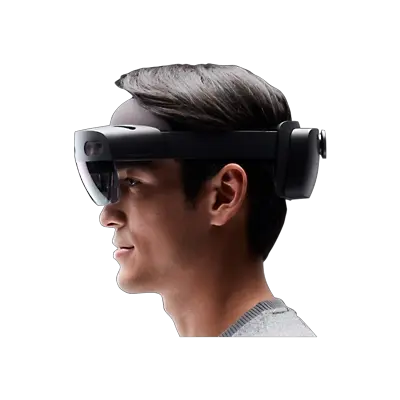
Microsoft HoloLens: Bridging AR and Productivity
When it comes to Mixed Reality in professional settings, Microsoft HoloLens is leading the charge. Unlike traditional VR headsets, HoloLens allows users to see the real world around them while interacting with digital content in 3D space. This makes it ideal for industries like construction, engineering, and healthcare, where seeing virtual models or data overlaid on the real world can vastly improve productivity.
For example, architects can use HoloLens to visualize building designs in real-time, allowing for better collaboration and decision-making. In healthcare, doctors are using it to practice surgeries in 3D space, reducing risks in the operating room.
Valve Index: High-End VR for Gamers and Creatives
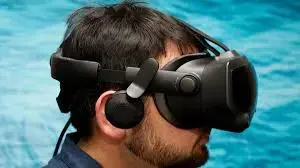
The Valve Index is known for offering one of the most immersive VR experiences available. Its high-resolution display and ultra-precise tracking make it a favorite among gamers and digital creators who require the most cutting-edge technology. Although it comes at a higher price point, the Valve Index offers top-notch performance that rivals any other VR system.
With games like Half-Life: Alyx, Valve has pushed the boundaries of what is possible in VR gaming, delivering a deeply immersive experience that captivates users. For creative professionals, the Index is often used in 3D design, art, and animation, enabling new ways to work in digital spaces.
Apple Vision Pro: A Glimpse into the Future
Among the most anticipated devices in the world of mixed reality is the Apple Vision Pro. While it stands out with its high-end features and integration of visionOS, Apple’s custom-built operating system, Vision Pro is not merely a device for tech enthusiasts but also targets a wide range of users. Its advanced capabilities for productivity, entertainment, and creativity make it a game-changer.
Apple Vision Pro merges AR and VR, allowing users to interact with their digital surroundings while remaining aware of the physical world. Its spatial computing capabilities enable tasks like arranging 3D applications in real-world space, attending virtual meetings, or even watching movies in a completely immersive format. Whether you're at work or at home, the Vision Pro adapts to your needs.
- Key Differentiators:
- Mixed Reality Integration: While Meta Quest 3 and Valve Index offer immersive experiences, Apple Vision Pro's ability to blend digital elements into the physical environment gives it an edge for professional use and daily tasks.
High-End Performance: Unlike its competitors, Vision Pro is equipped with spatial audio, 3D photography, and an array of built-in apps that support both work and play.
Though it is positioned at a higher price point compared to other devices like Meta Quest 3, Apple Vision Pro’s cutting-edge technology makes it a strong contender in shaping the future of Mixed Reality. If you want to explore all the features and capabilities of the Vision Pro, you can visit the official Apple Vision Pro page.
The Role of Software and Operating Systems in Mixed Reality
The Importance of visionOS, Meta’s OS, and Windows Mixed Reality
Behind every mixed reality experience is powerful software that ensures smooth operation and interaction. Apple’s visionOS, Meta’s VR platform, and Windows Mixed Reality all play key roles in enhancing the functionality of MR devices. Each of these systems offers its own ecosystem of applications, creating unique experiences for users.
For instance, visionOS, powering the Apple Vision Pro, is specifically designed to make interacting with digital content feel natural. Meanwhile, Meta's VR platform focuses on creating social VR spaces, like Horizon Worlds, allowing people to connect in virtual environments. Windows Mixed Reality helps businesses integrate MR into professional tools like Microsoft Teams, creating a seamless link between the digital and physical workspace.
Augmented Reality in Everyday Applications
Augmented reality is no longer confined to expensive headsets. Apps like Google ARCore and Snapchat’s AR filters are available on smartphones, bringing AR to millions of users daily. Whether it’s overlaying directions in Google Maps or letting users try on virtual makeup in Instagram, AR is becoming an integral part of our digital lives.
For businesses, AR has become a powerful marketing tool. Retailers are using AR to let customers visualize products in their homes before buying, and AR-based advertisements are offering more interactive experiences that engage consumers directly.
Comparing VR, AR, and Mixed Reality: Which is Right for You?
Virtual Reality: Total Immersion
VR is the go-to for people looking for complete immersion. Whether it’s gaming, cinematic experiences, or simulations, VR provides a way to escape into digital worlds. Devices like the Oculus Rift, PlayStation VR, Pico Neo 3 and Valve Index are popular choices, offering everything from casual games to intense simulations like Microsoft Flight Simulator.
Augmented Reality: Enhancing the Real World
AR enhances the real world by overlaying digital content. This makes it ideal for those who prefer to keep one foot in reality while still engaging with digital experiences. Smartphone-based AR has become widespread with apps like Pokémon GO and IKEA Place, allowing users to interact with virtual objects in real-world settings.
Mixed Reality: A Hybrid Approach
Mixed Reality (MR) devices, such as the Microsoft HoloLens and Apple Vision Pro, combine both VR and AR to create a hybrid experience. This means users can interact with 3D digital content while maintaining a clear view of their physical surroundings. For professionals in fields like architecture, healthcare, and design, MR offers a unique tool that enhances productivity and innovation by bringing digital models into the real world.
- Apple Vision Pro's Role in Mixed Reality: Apple Vision Pro excels in this domain by using visionOS to create immersive, yet practical, MR experiences. For example, an architect can overlay virtual building designs in the real world, allowing them to interact with the project in real-time, while still communicating with clients in the same physical space.

The Future of Mixed Reality: Where Are We Headed?
As technology continues to evolve, the line between digital and physical realities is becoming increasingly blurred. With devices like Apple Vision Pro, Meta Quest 3, Microsoft HoloLens, and the Valve Index, we are witnessing a profound transformation in how we interact with the world around us. Mixed reality is no longer a distant vision of the future but a growing part of our everyday lives, offering endless possibilities for both work and entertainment.
Whether you're a gamer, a professional, or simply a tech enthusiast, there’s a mixed reality device designed to meet your needs. As we move forward, advancements in VR, AR, and MR will only continue to reshape industries, enhance creativity, and redefine how we connect with the world.
With innovations like Apple Vision Pro leading the way, the next frontier of mixed reality promises to be more exciting, immersive, and integrated into our daily lives than ever before. The journey has just begun, and the future looks brighter and more connected, as digital and physical worlds seamlessly merge.



